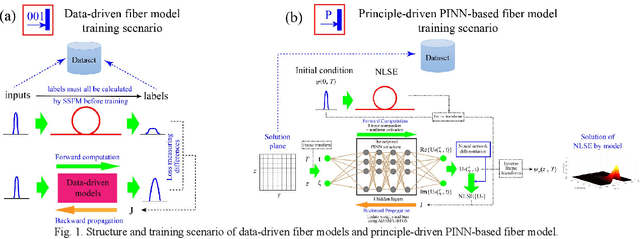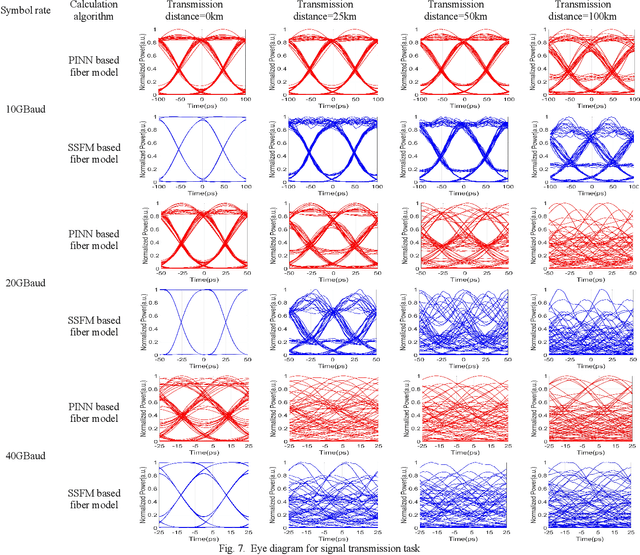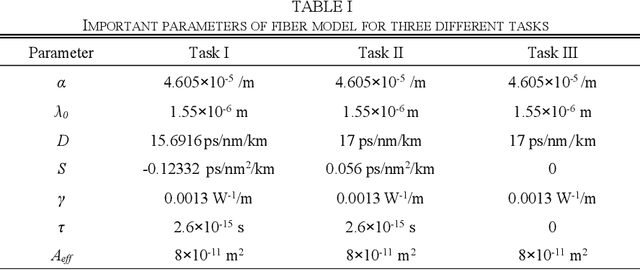Zhenming Yu
Integration of Communication and Computational Imaging
Oct 29, 2024



Abstract:Communication enables the expansion of human visual perception beyond the limitations of time and distance, while computational imaging overcomes the constraints of depth and breadth. Although impressive achievements have been witnessed with the two types of technologies, the occlusive information flow between the two domains is a bottleneck hindering their ulterior progression. Herein, we propose a novel framework that integrates communication and computational imaging (ICCI) to break through the inherent isolation between communication and computational imaging for remote perception. By jointly considering the sensing and transmitting of remote visual information, the ICCI framework performs a full-link information transfer optimization, aiming to minimize information loss from the generation of the information source to the execution of the final vision tasks. We conduct numerical analysis and experiments to demonstrate the ICCI framework by integrating communication systems and snapshot compressive imaging systems. Compared with straightforward combination schemes, which sequentially execute sensing and transmitting, the ICCI scheme shows greater robustness against channel noise and impairments while achieving higher data compression. Moreover, an 80 km 27-band hyperspectral video perception with a rate of 30 fps is experimentally achieved. This new ICCI remote perception paradigm offers a highefficiency solution for various real-time computer vision tasks.
Atmospheric Turbulence-Immune Free Space Optical Communication System based on Discrete-Time Analog Transmission
Sep 18, 2024



Abstract:To effectively mitigate the influence of atmospheric turbulence, a novel discrete-time analog transmission free-space optical (DTAT-FSO) communication scheme is proposed. It directly maps information sources to discrete-time analog symbols via joint source-channel coding and modulation. Differently from traditional digital free space optical (TD-FSO) schemes, the proposed DTAT-FSO approach can automatically adapt to the variation of the channel state, with no need to adjust the specific modulation and coding scheme. The performance of the DTAT-FSO system was evaluated in both intensity modulation/direct detection (IM/DD) and coherent FSO systems for high-resolution image transmission. The results show that the DTAT-FSO reliably transmits images at low received optical powers (ROPs) and automatically enhances quality at high ROPs, while the TD-FSO experiences cliff and leveling effects when the channel state varies. With respect to the TD-FSO scheme, the DTAT-FSO scheme improved receiver sensitivity by 2.5 dB in the IM/DD FSO system and 0.8 dB in the coherent FSO system, and it achieved superior image fidelity under the same ROP. The automatic adaptation feature and improved performance of the DTAT-FSO suggest its potential for terrestrial, airborne, and satellite optical networks, addressing challenges posed by atmospheric turbulence.
Semantic optical fiber communication system
Dec 27, 2022Abstract:The current optical communication systems minimize bit or symbol errors without considering the semantic meaning behind digital bits, thus transmitting a lot of unnecessary information. We propose and experimentally demonstrate a semantic optical fiber communication (SOFC) system. Instead of encoding information into bits for transmission, semantic information is extracted from the source using deep learning. The generated semantic symbols are then directly transmitted through an optical fiber. Compared with the bit-based structure, the SOFC system achieved higher information compression and a more stable performance, especially in the low received optical power regime, and enhanced the robustness against optical link impairments. This work introduces an intelligent optical communication system at the human analytical thinking level, which is a significant step toward a breakthrough in the current optical communication architecture.
Self-supervised Neural Networks for Spectral Snapshot Compressive Imaging
Aug 28, 2021



Abstract:We consider using {\bf\em untrained neural networks} to solve the reconstruction problem of snapshot compressive imaging (SCI), which uses a two-dimensional (2D) detector to capture a high-dimensional (usually 3D) data-cube in a compressed manner. Various SCI systems have been built in recent years to capture data such as high-speed videos, hyperspectral images, and the state-of-the-art reconstruction is obtained by the deep neural networks. However, most of these networks are trained in an end-to-end manner by a large amount of corpus with sometimes simulated ground truth, measurement pairs. In this paper, inspired by the untrained neural networks such as deep image priors (DIP) and deep decoders, we develop a framework by integrating DIP into the plug-and-play regime, leading to a self-supervised network for spectral SCI reconstruction. Extensive synthetic and real data results show that the proposed algorithm without training is capable of achieving competitive results to the training based networks. Furthermore, by integrating the proposed method with a pre-trained deep denoising prior, we have achieved state-of-the-art results. {Our code is available at \url{https://github.com/mengziyi64/CASSI-Self-Supervised}.}
Principle-driven Fiber Transmission Model based on PINN Neural Network
Aug 24, 2021


Abstract:In this paper, a novel principle-driven fiber transmission model based on physical induced neural network (PINN) is proposed. Unlike data-driven models which regard fiber transmission problem as data regression tasks, this model views it as an equation solving problem. Instead of adopting input signals and output signals which are calculated by SSFM algorithm in advance before training, this principle-driven PINN based fiber model adopts frames of time and distance as its inputs and the corresponding real and imaginary parts of NLSE solutions as its outputs. By taking into account of pulses and signals before transmission as initial conditions and fiber physical principles as NLSE in the design of loss functions, this model will progressively learn the transmission rules. Therefore, it can be effectively trained without the data labels, referred as the pre-calculated signals after transmission in data-driven models. Due to this advantage, SSFM algorithm is no longer needed before the training of principle-driven fiber model which can save considerable time consumption. Through numerical demonstration, the results show that this principle-driven PINN based fiber model can handle the prediction tasks of pulse evolution, signal transmission and fiber birefringence for different transmission parameters of fiber telecommunications.
High-speed real-time single-pixel microscopy based on Fourier sampling
Jun 15, 2016



Abstract:Single-pixel cameras based on the concepts of compressed sensing (CS) leverage the inherent structure of images to retrieve them with far fewer measurements and operate efficiently over a significantly broader spectral range than conventional silicon-based cameras. Recently, photonic time-stretch (PTS) technique facilitates the emergence of high-speed single-pixel cameras. A significant breakthrough in imaging speed of single-pixel cameras enables observation of fast dynamic phenomena. However, according to CS theory, image reconstruction is an iterative process that consumes enormous amounts of computational time and cannot be performed in real time. To address this challenge, we propose a novel single-pixel imaging technique that can produce high-quality images through rapid acquisition of their effective spatial Fourier spectrum. We employ phase-shifting sinusoidal structured illumination instead of random illumination for spectrum acquisition and apply inverse Fourier transform to the obtained spectrum for image restoration. We evaluate the performance of our prototype system by recognizing quick response (QR) codes and flow cytometric screening of cells. A frame rate of 625 kHz and a compression ratio of 10% are experimentally demonstrated in accordance with the recognition rate of the QR code. An imaging flow cytometer enabling high-content screening with an unprecedented throughput of 100,000 cells/s is also demonstrated. For real-time imaging applications, the proposed single-pixel microscope can significantly reduce the time required for image reconstruction by two orders of magnitude, which can be widely applied in industrial quality control and label-free biomedical imaging.
 Add to Chrome
Add to Chrome Add to Firefox
Add to Firefox Add to Edge
Add to Edge